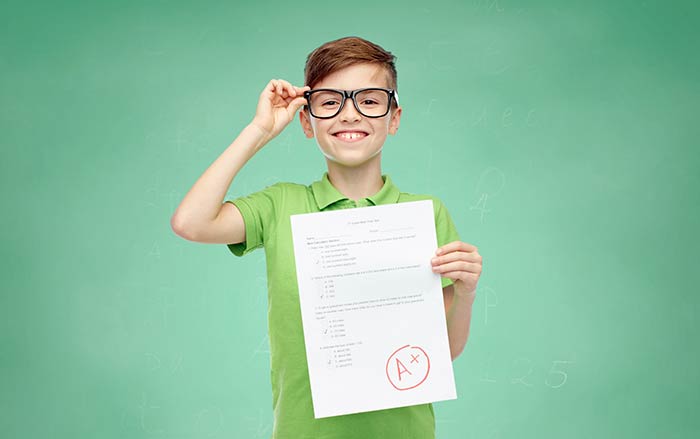How to tell if your child needs prescription glasses for school

Vision affects children's school performance—in terms of grades, well-being, and behavior—to a striking degree. A child's eyes are constantly in use, whether they are coloring, building Lego empires, reading, writing, doing chalkboard work, or using computers. In fact, The American Academy of Ophthalmology estimates that 80 percent of all learning during a child's first 12 years comes through the eyes. Add to that the fact that during their first seven to eight years of life, a child’s vision is still developing, and glasses may be necessary to support normal visual development. That being said, let’s answer the question of the hour: how can I tell if my kids need prescription glasses?
In order to have a great school year, you should really go get tested annually, before school starts. But here are some additional signs in case you have a hunch want to play detective:
Having a short attention span for visually demanding activities.
They may avoid reading and other visual work as much as possible. Alternatively, they could attempt to do the work anyway, but with a lowered level of comprehension or efficiency. They may easily lose their place while reading, or have difficulty remembering what they just read. Children often need to adapt their visual focus from distant to near, on a number of different objects at school, ranging from chalkboards and computers to textbooks and tablets. This is why vision problems may manifest as a lack of focus or behavior problems at school.
Squinting.
Squinting may be a sign that your child has a refractive error, which affects how well the eyes focus on an image. By squinting, they may be able to temporarily improve the focus and clarity of an object.
Sitting too close to the television or holding hand-held devices too close to the eyes.
Sitting too close to the television, holding hand-held devices too close to the eyes or lowering the head while reading are all possible signs of poor vision. People who have myopia, or nearsightedness, have clear vision at close range and poorer vision at a distance. Bringing an object closer makes an image bigger and clearer.
Experiencing discomfort and fatigue.
If your child complains about eye pain or headaches at the end of the day, he or she may be overexerting the eyes in an effort to increase focus of blurred vision.
Rubbing eyes excessively.
Excessive eye rubbing may indicate that your child is experiencing eye fatigue or strain. This could be a sign of many types of vision problems and conditions, including allergic conjunctivitis.
Tilting head or covering one eye.
Your child might cover one eye or tilt his or her head to adjust the angle of vision in an attempt to increase clarity. This might be an indication that the eyes are misaligned or that your child has “lazy eye,” which is one of the most common eye disorders in children.
If you answered yes to at least one of these, it would probably be best to go get tested. At Optiwow we really recommend getting your kids checked early. Being informed and planning for optimal vision is very important to aid your child’s growth and learning!